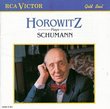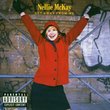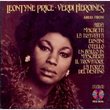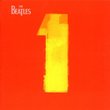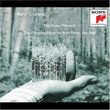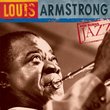| All Artists: Benny Goodman Title: The Complete RCA Victor Small Group Recordings Members Wishing: 4 Total Copies: 0 Label: RCA Original Release Date: 10/28/1997 Release Date: 10/28/1997 Genres: Jazz, Pop Style: Swing Jazz Number of Discs: 3 SwapaCD Credits: 3 UPC: 090266876426 |
Search - Benny Goodman :: The Complete RCA Victor Small Group Recordings
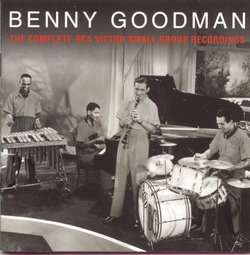 | Benny Goodman The Complete RCA Victor Small Group Recordings Genres: Jazz, Pop
Benny Goodman's formidable work in front of the big band made him one of the world's most popular musicians, but his work with these "chamber jazz" groups made him one of the world's most respected musicians. Louis Armstro... more » |
Larger Image |
CD DetailsSynopsis
Amazon.com essential recording Benny Goodman's formidable work in front of the big band made him one of the world's most popular musicians, but his work with these "chamber jazz" groups made him one of the world's most respected musicians. Louis Armstrong's Hot Five and Jimmie Noone's Apex Club band, to name two, had prospered in the 1920s as small groups playing traditional New Orleans-style fare, but until Goodman's forays beginning in 1935, the small band had been limited to blues, Dixieland, and the group improvisations of the New Orleans style. Goodman applied the small-group concept to the steady 4/4 rhythm and the repertoire (mostly standards) of swing. Instead of being dance music, this small-group swing showcased the individual and collective talent of the musicians involved--and the talent and telekinetic interplay of these men were considerable to say the least. Like Goodman, pianist Teddy Wilson was a superior technician who never let technique come before spirit or emotion. His miraculous left-hand harmonic invention (listen to "I'm a Ding Dong Daddy") and his sharp sense of humor (listen to him boogie-woogie in "Exactly Like You") never came at the expense of taste. Drummer Gene Krupa and vibraphonist Lionel Hampton provide the energy and drive. Meanwhile, Goodman's total mastery of the clarinet gave him the freedom to soar effervescently, growl menacingly, and swing majestically--and to make it all sound effortless. A revolutionary set, without even considering the social implications of being the first racially integrated band. Perfection never sounded so playful. --Marc Greilsamer Similarly Requested CDs
|
CD ReviewsBeautiful Box Set -- Somewhat Disappointing Transfers classicalnjazz | USA | 03/04/2001 (4 out of 5 stars) "Having owned earlier 78 and LP incarnations of these and the previous BMG/RCA CD set of Goodman's Small Group recordings, which I believe were derived from the much noisier French RCA Black-and-White transfers and contained the very skimpy "Jazz Tribune" liner notes, I really looked forward to this 3-CD box set. First of all, I should point out that this new release contains unissued alternate takes and recordings from sessions in 1937, 38 and 39 not included in the aforementioned "The Complete Small Combinations" 2-CD set. Moreover, the liner notes in this release are among the finest that I have ever seen and are replete with detailed discographical and session info. To top it all off, the photos and graphics work are rather tastefully done. Now for the negative... According to the reissue notes, the audio engineers went back to the original metal parts and test pressings from BMG's vaults to use as the source material for this set, substituting in transfers from carefully-preserved shellac copies from the Institute of Jazz Studies at Rutgers when necessary. Naturally, I expected a significant improvement over the previous issues. The only improvement that I noticed was a marked reduction in surface noise and imperfections, confirming my hopes that they really used cleaner source material. However, it seems that the transfer engineers decided to process the sound way beyond what I consider to be acceptable. The result is a rather dull, hollow and distorted piano tone. Moreover, Krupa's and Tough's brushes are practically filtered out because of this overuse of the CEDAR denoising system. Oddly enough, Goodman's clarinet manages to come through quite clearly. Had the engineers taken a slightly less interventionist approach, I would be giving this release a full 5 stars. Simply put, they sacrificed too much of the music in an attempt to scrub away practically all of the surface noise. This leads me to wonder why BMG/RCA did not hire the services of transfer engineer extraordinaire Ward Marston for this project. After all, he was involved in their excellent Rachmaninoff, Kreisler, Legendary Performers, and Rubinstein classical projects... Overall, I recommend this set with the one reservation about the overprocessed, overfiltered sound. As for the performances themselves, they are absolutely magical and ought to be mandatory listening for everyone interested in this musical genre. Enjoy!" For serious Benny Goodman fans Candace Scott | Lake Arrowhead, CA, USA | 07/08/2000 (4 out of 5 stars) "I'm a huge Benny Goodman fan and this double album is atreasure trove. The alternate take to "Body and Soul" isbrilliant, almost (but not quite) as good as the standard album track. Teddy's piano playing here will knock you out. It was also a blast to hear the unreleased take of "Stompin' at the Savoy." All of these tracks showcase Benny's remarkable style and feel. Krupa also never sounded better, the remastering here really brings out the percussion. This album should not be recommended to someone just beginning to sample Benny Goodman. Only aficionado's would appreciate three different takes of "Tiger Rag," great as it is. A Benny neophyte would be better served by one of the standard "Greatest Hits" package. But if you've already got 50-100 CD's on Benny and are one of those who wants to hear it all, this fits the bill." Goodman at his jazzy best Steve Emerine | Tucson, AZ United States | 05/13/2001 (5 out of 5 stars) "This 3-CD, 67-track box set is the ultimate gift for that Benny Goodman combo fan you know or love. Most collections have some of these tunes, and some even have most of them, but the 20 alternate takes included here make this a real bargain. The 40-page illustrated booklet is the frosting on the cake. You'll get plenty of Goodman, Teddy Wilson, Lionel Hampton and Gene Krupa on this, but you may be surprised to rediscover vocals by Helen Ward, Martha Tilton and Hampton along the way. An excellent example of what more record companies should be doing today!"
|

 Track Listings (21) - Disc #1
Track Listings (21) - Disc #1